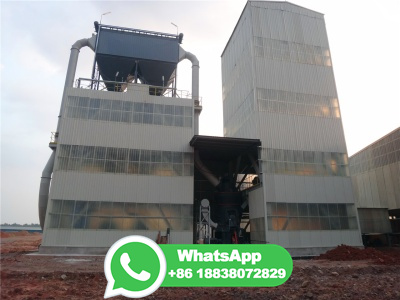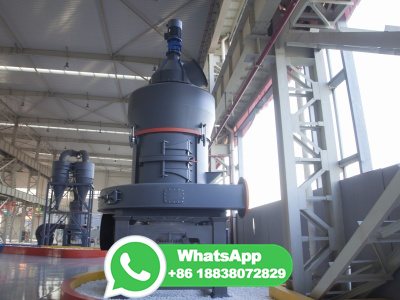
This process enhances the rank of coal. Temperature and pressure are main factors here. Generation of thermogenic methane takes place at a temperature more than 50 °C at this stage. Development of coal through peat to anthracite involves complex chemical changes. Extensive studies on this evolutionary path led to number of correlations and ...
WhatsApp: +86 18037808511
Coal is defined as having more than 50 percent by weight (or 70 percent by volume) carbonaceous matter produced by the compaction and hardening of altered plant remains—namely, peat deposits. Different varieties of coal arise because of differences in the kinds of plant material (coal type), degree of coalification (coal rank), and range of impurities (coal grade).
WhatsApp: +86 18037808511
Charcoal is made from peat, coal, wood, coconut shell, or petroleum. Activated charcoal is made by heating charcoal in the presence of a gas. This process causes the charcoal to develop lots of internal spaces or pores. These pores help activated charcoal trap chemicals. Activated charcoal is commonly used to treat poisoning.
WhatsApp: +86 18037808511
Formation of Coal (Process) Coal is composed of carbon, hydrogen, oxygen, nitrogen, sulphur, moisture, and incombustible mineral matter (, ash). Fluorinated gases are not formed by coal combustion. ... It is hard, lustrous and has the highest percentage of carbon among peat, lignite, bituminous and anthracite. This is also called as hard coal.
WhatsApp: +86 18037808511
All coals, regardless of whether they are caking or coking coals, leave a solid carbonaceous residue at the end of the carbonization process. Chars, if heattreated to extreme temperatures, ≥2500 °C, do not form graphite, while cokes do. That is, chars are nongraphitizable, while cokes are graphitizable [A]. Type.
WhatsApp: +86 18037808511
How to reduce the energy consumption of the rotary kilnelectric furnace (RKEF) process has become an important issue for the stainless steel industry. The aim of this study is to reduce the energy consumption of ferronickel production from saprolite nickel laterite in the RKEF process. The effects of the slag binary basicity, FeO content, and Cr2O3 content on the melting temperature and ...
WhatsApp: +86 18037808511
Types of Coal. The process by which something changes under the effect of pressure and temperature is known as metamorphism in geology. Coal is classified into different types based on the different stages of metamorphism undergone by it. Peat Peat is not coal, but a precursor to it. Peat is partially decomposed plant matter that has a ...
WhatsApp: +86 18037808511
Peat Peat is not coal, but can eventually transform into coal under the right circumstances. Peat is an accumulation of partly decayed vegetation that has gone through a small amount of carbonization. ... In the United States, the Surface Mining Control and Reclamation Act of 1977 regulates the process of coal mining, and is an effort to limit ...
WhatsApp: +86 18037808511
The overall thermal efficiency of the process is calculated to be 67% for a 250 billion Btu per day SNG plant using a 50% moisture content Minnesota peat. About 78% of the total methane produced in the plant is made in the gasifier itself. Therefore, only about 22% of the methane is made by more ». Conference: 5. annual international ...
WhatsApp: +86 18037808511
The tender age of coal is referred as peat which is made of vegetative remnants as evidenced by the presence of biomarkers detected through chemical, geological, and petrographic studies [3]. Peat is a naturally existing sedimentary material with its origins incident from botanical and geological processes having major contributions ...
WhatsApp: +86 18037808511
The formation of peat is a relatively short biochemical process under the influence of aerobic microorganisms in the surface depths of the deposits during periods of low subsoil water. As the peat which is formed in the peatproducing layer becomes subjected to anaerobic conditions in the deeper layers of the deposit, it be preserved and shows ...
WhatsApp: +86 18037808511
The results of this process, the type of peat and coal formed, depend on the phytogenic input and the environmental conditions under which it is transformed into peat. Different biological, chemical and physical constraints result in different peat types which during the subsequent physicochemical coalification are transformed into ...
WhatsApp: +86 18037808511
Coal and peat is still used for residential and commercial heating in some parts of the world ( Ireland and Finland). In its dehydrated form, peat is a highly effective absorbent for fuel and oil spills on land and water. ... releasing water that was held in the pores (holes) in the coal. The process produces a denser coal in pellet form ...
WhatsApp: +86 18037808511
cases, the peat must be buried and preserved in sediments to eventually form a coal deposit. The process of peat accumulation and transformation into coal generally takes place over many millions of years. Coalforming Plants Coal is composed of the fossilized remains of plants that range from tropical to
WhatsApp: +86 18037808511
As lithification occurs, peat turns to lignite. With increasing heat and pressure, lignite turns to subbituminous coal, bituminous coal, and then, in a process like metamorphism, anthracite. Anthracite is the highest metamorphic grade and most desirable coal since it provides the highest energy output. With even more heat and pressure driving ...
WhatsApp: +86 18037808511
What is the process of coal formation? Coal is formed when dead plant matter decays into peat and is converted into coal by the heat and pressure of deep burial over millions of years. Is peat better than coal? Peat is the most damaging fuel in terms of global warming; even worse than coal. It has a lower calorific value than coal (generating ...
WhatsApp: +86 18037808511
Cost considerations play a significant role in the decisionmaking process between coal and peat. Coal, being a widely traded commodity, often benefits from economies of scale, making it relatively affordable compared to other fossil fuels. The infrastructure and technology developed around coal extraction and utilization further contribute to ...
WhatsApp: +86 18037808511
In the process of coal mining, prevention and control of water hazard is essential. It is the precondition for water hazard control to detect and determine the distribution of underground waterconducting channels. In urban environments, traditional methods such as active source seismic exploration and transient electromagnetic exploration commonly used in the field are difficult to carry out ...
WhatsApp: +86 18037808511
Coal Rank. Coalification is the process of metamorphism that takes place with time under conditions of increasing pressure and temperature. The original peat swamp vegetation is transformed to brown coal, lignite, subbituminous coal, bituminous coal (low, medium, high rank), semianthracite, anthracite, metaanthracite by the loss of moisture ...
WhatsApp: +86 18037808511
Coal is derived from vegetable matters. The vegetable matters first decompose and form peat. Subsequently, peat is, under suitable geothermal condition, progressively converted to lignite, bituminous, and anthracite. The process of conversion of lignite to anthracite is known as metamorphism or coalification.
WhatsApp: +86 18037808511
How coal is formed. Coal is formed when dead plant matter submerged in swamp environments is subjected to the geological forces of heat and pressure over hundreds of millions of years. Over time, the plant matter transforms from moist, lowcarbon peat, to coal, an energy and carbondense black or brownishblack sedimentary rock.
WhatsApp: +86 18037808511
That peat, which is sometimes a precursor to coal, has its own long history: it is home to insects, fungi, bacteria and even burrowing tree roots, all of which help break down plants in a process ...
WhatsApp: +86 18037808511
Diagenesis of Coal. The process that makes peat or sapropelite turned into lignite or saprodite is called the diagenesis of coal. Diagenesis occurs at the initial stage of coalification. When the peat or sapropelite is covered by the upper deposits and buried into the ground due to the basin subsidence, the effects of compression ...
WhatsApp: +86 18037808511
As nouns the difference between peat and coal is that peat is soil formed of dead but not fully decayed plants found in bog areas while coal is a black rock formed from prehistoric plant remains, composed largely of carbon and burned as a fuel. As a verb coal is to take on a supply of coal (usually of steam ships).
WhatsApp: +86 18037808511
This description simplifies the process of "coalification" or the formation of coal and progression through the ranks of coal. It is important to understand coal formation from this simplified perspective to then understand that no two coals are coal within a distinct coal seam will vary based on opportunities for mineral incursions in the peat swamp or exposure to igneous ...
WhatsApp: +86 18037808511